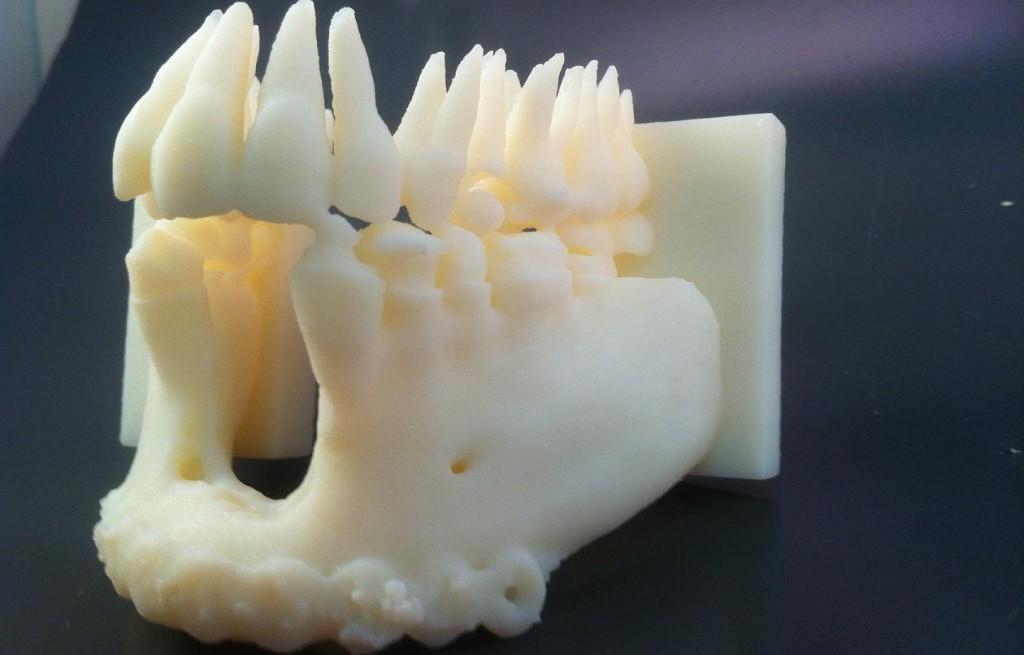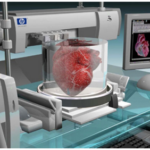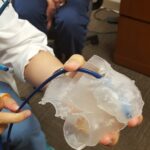

When a patient walks into a hospital on the day of a scheduled surgery, there is usually a tremendous amount of nervousness that follows. While, surgeons have been specially trained, and the majority of them have probably taken part in numerous similar operations in the past, there is still a cause for concern, as no surgery is without risks. As time goes on, and technology improves, surgeons are able to perform more complicated surgeries, in less time, and through less invasive techniques.
One of the technologies that has been helping surgeons perform complicated surgeries, while reducing risks, and decreasing a patient’s time under anesthesia, is that of 3D printing. Today, Stratasys Ltd. announced that a company which specializes in medical related 3D printing, called Replica 3DM, has been using Stratasys’ 3D printers, including two models in particular – the Objet 24 and Objet 30 – to help 12 National Health Service hospitals in the United Kingdom perform surgery. More specifically these printers are being used for the validation of surgery prior to the operation taking place.
Replica 3DM’s 3D printers are used to convert a patient’s CD scans into tangible replicas of portions of their body. These replicas are then used as surgical guides to test implants and ensure that they are the correct size for that patient. These printers have been used to assist in all kinds of surgeries including orthopedics, neurological, maxillofacial, nose and throat wards, and spinal and ear operations, among others. On top of this, Replica 3DM also creates 3D printed cranioplasty models to help in the reconstruction of patients’ faces. To do this, they take a scan of the unaffected side of a patient’s face and head, and then mirror it and print out that mirror image. This allows for tremendous accuracy when fitting and placing titanium plates within the patient’s skull/face.
“To us, 3D printing and the medical profession go hand-in-hand, particularly in the planning of complicated procedures,” said Matthew Sherry, Managing Director and Founder of Replica 3DM. “A 3D model equips surgeons with a hands-on perspective which cannot be achieved by looking at a computer screen. They can easily rotate, inspect and analyze each surgical procedure on a case-by-case basis, enabling them to pre-bend implants knowing that they will perfectly fit the patient. This is instrumental in eliminating potential problems during operations and can be used as a visual aid when explaining the surgical procedure to patients.”

Before the introduction of 3D printing, surgeons would depend on their experience, to fit titanium implants to a patient during surgery. This would increase surgical risks as well as the time it takes to perform the surgery. By using the 3D printed models, surgeons can now pre-bend the titanium plates to fit exactly to the patients skull or face, prior to actually performing the surgery.
“This reduced the number of incisions required and overall theatre time, directly impacting the quality of patient care,” said Sherry. “With theatre typically costing around £3,600 an hour, you can imagine how much we save NHS Trusts. In most cases, a model will pay for itself and helps with essential pre-operative surgical planning. With Stratasys Objet 3D Printers offering the best quality and accuracy for the medical industry, they were the obvious choice for us. Opting to purchase two Stratasys 3D Printers has also enabled us to double our capacity and, with more and more Trusts requiring our services, I believe that we will see a 50% increase in client demands within the next few months.”
This isn’t the first time that we have seen or heard of 3D printing being used to plan for a surgery. It is becoming more and more common, particularly in Europe and the United States, although, as we recently reported, hospitals in South America have also been using the technology to aid in complicated surgeries.
“In an industry where precision is paramount, the ability to produce highly accurate 3D printed surgical models and guides that mimic the look and feel of titanium implants can both lower costs and reduce the time required for patients to be anesthetised. As a result, an increasing number of hospitals worldwide are integrating 3D printing into surgical planning procedures, which is having an immediate positive impact on the quality of patient treatment,” explained Chris Baker, Stratasys Northern European Territory Manager.
3D printing, prior to, during and after surgery will continue to gain momentum, as more and more hospitals and surgeons discover the benefits provided by the technology. I know that if I had the option to let a doctor perfectly fit an implant to a 3D printed replica of my skull, or practice surgery on a 3D printed model that is identical to what they will find once they cut me open, I would certainly choose this new method. What do you think about what Replica 3DM is doing in conjunction with Stratasys and these 12 National Health Service hospitals in the UK? Discuss in the Replica 3DM surgical model forum thread on 3DPB.com.
If you're looking to get architectural 3D animation in the USA, our service provides an exceptional way to bring your architectural concepts to life through dynamic, immersive visuals. Through our platform, you can easily request high-quality 3D animations that showcase your designs in motion, offering a detailed view of your project from multiple angles and perspectives. Whether it's for a real estate development, a commercial building, or an urban planning project, our expert team ensures that every detail is captured in a visually compelling animation.
Through our website, you can seamlessly get architectural 3D animation tailored to your project’s specific needs. With our help, you can offer potential clients or investors an engaging experience that goes beyond static images. By integrating CGI animations with real-world settings, lighting, and textures, our team creates a lifelike experience that allows your audience to interact with your project as though it were already built. This service is perfect for presenting complex designs in a clear, visually attractive way that stands out in the competitive architectural market.




